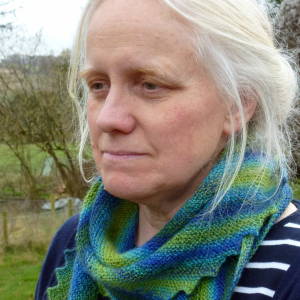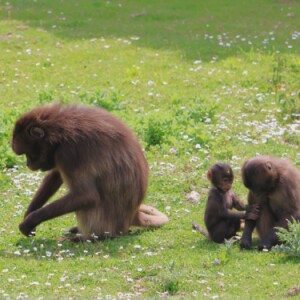Howletts
This was the long-promised day at the animal park. Our proximity to Howletts, which was documented in a CBBC series when J was growing up, was, for her, a major attraction of our move to Kent in 2013, and we first visited the park the day after the removers left. An annual pass gave us plenty of time to get to know every corner through regular short visits, to see even the more elusive animals hiding in large or leafy enclosures and to see the daytime sleepers emerge before closing time. We spent long periods quietly observing the gorillas, enjoyed the baby anteater, baby elephants and spotty baby tapir, and were thrilled to glimpse the fishing cat and the clouded and snow leopards. Some of the cat enclosures seemed rather confined to me, with plenty of vegetation and structures to climb but no real space to run; but the elephants and rhinoceros had large paddocks in the Kent countryside, the capybaras grazed placidly among the daisies and buttercups, the pack of painted dogs ran, chased and hid among grass, trees, shrubs and earthed tunnels. We enjoyed our year of visits, and expected that at some point we would want to repeat the experience.
I've always had very mixed feelings about keeping animals in zoos. My first childhood zoo visit, on a hot day in the 1960s when I was perhaps eight to a traditional city zoo, left me awed by the giraffes and elephants but upset by the poky cages and the smell. I was reluctant to repeat the experience, and avoided zoos until J was about eighteen months old, when we spent a weekend in Chester. P grew up walking his dog around the perimeter fences of Chester zoo and hearing the gibbons through his bedroom window, and was determined we should take J to experience the animals; it proved to be a wonderful day. She was enthralled by everything, wide awake and sparkly eyed all day, refusing to sleep until we returned to car at closing time. She followed our rudimentary sign language avidly as we named the animals she had seen in her books, squeaked with excitement when she was lifted from her buggy to feel soft fur in the petting area; I don't think I had ever seen her so fully engaged and excited for so long. Since then we have visited animal parks and zoos in many cities and countries, in between the art galleries and architecture. Some have been excellent, a few markedly less salubrious.
In the decade since our last visit, Howletts has moved on. New management following the death of its founder has brought increased emphasis on and further development of projects to support endangered populations in the wild through breeding and relocation of animals bred in captivity. Significant numbers of lowland gorillas and black rhinos have been transported to Africa, and breeding programmes there have apparently been very successful. We knew about that, and few would argue with its value, though I'm not sure how far wider issues and threats relating to poaching, habitat loss and climate change are being seriously addressed by those attracted by the glamour of winching rhinos from helicopters. We discovered as we walked round that less endangered animals are also being moved - the honey badgers have gone to live in Africa, much of the elephant herd has moved, the capybaras and tapirs have disappeared. Lots of enclosures have signs giving information about animals which no longer appear to be there; others have clearly been abandoned altogether. The large herd of red river hogs whose squealing babies used to run around a hillside has clearly shrunk - we only spotted about four. There are far fewer big cats, and most of the monkey enclosures, with their large indoor and outdoor spaces, now seem to house few animals. I didn't know what to think. I've always had reservations about zoos, but I've also seen the impact good zoos can have, their capacity to create awe, wonder and respect in a way that no number of Attenborough documentaries, valuable and wonderful as they are, can quite achieve. Some children only learn how big a cow is through visits to city farms, and most will never have the opportunity to experience lions, gibbons or anteaters in the wild. I couldn't help being sad, though I also felt bad about it and recognised that a significant part of my regret was nostalgia for our happy memories of past visits. J's enthusiasm was also distinctly muted. We had a nice day, we saw water buffalo, a clouded leopard and a serval, and it's a lovely park with many, varied mature trees, spacious, shady picnic areas, some lovely areas of planted garden and a large herb garden where long beds grow delicacies for the animals; but it's expensive to visit and replicas of prehistoric animals don't compensate for all the empty spaces. I don't think we will go back. Perhaps some will condemn our selfishness for thinking our interest and enjoyment can outweigh legitimate concerns about what's best for wild animals; perhaps my justifications about the value of seeing animals in the flesh and at close quarters are not enough - I don't know, but I suspect that in another decade this park, if it's still open, will be some sort of visitor attraction with a range of family fun and semi-educational activities far removed from our experience of taking our young disabled child to meet wild animals for the first time and from the impact such visits over the years have had on her adult concern for animal welfare and wider environmental issues.
The main photo is a Red River hog. They are not everyone's favourite, but I always enjoyed seeing them and this one posed nicely for me and was very adept at using those long, tasselled ears to flick flies off its back. The extras are a poorly lit and focused monkey family - I couldn't resist including those little hands and ear; a black rhino grazing in rural Kent; a serval waiting for its tea to arrive - photographed through wire mesh, but I loved its markings and its graceful, delicate movement on its long legs; and a brightly planted corner of the garden.




Comments
Sign in or get an account to comment.


